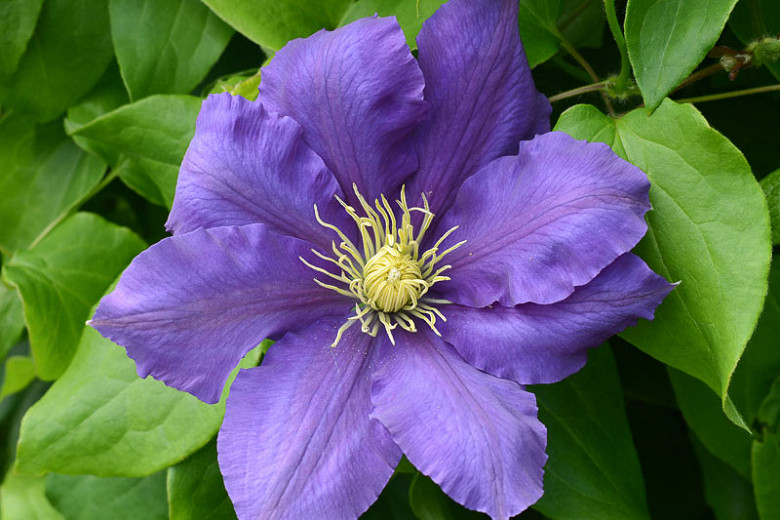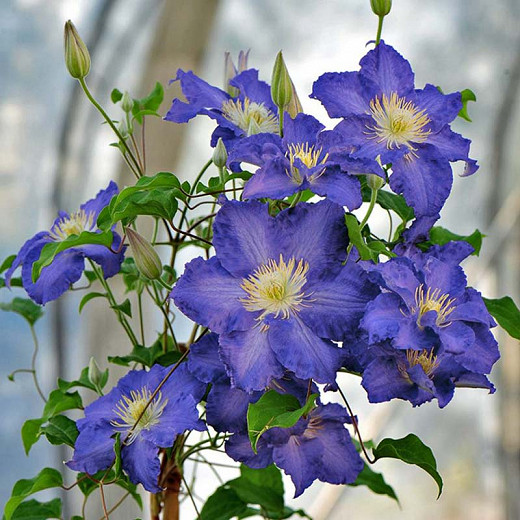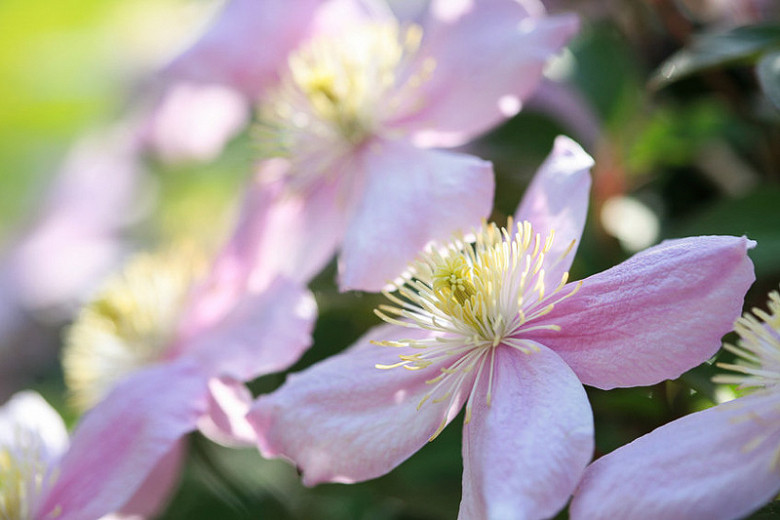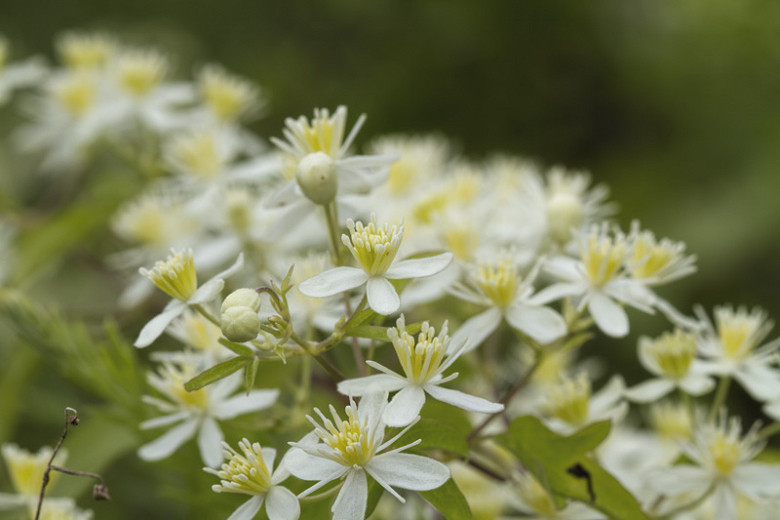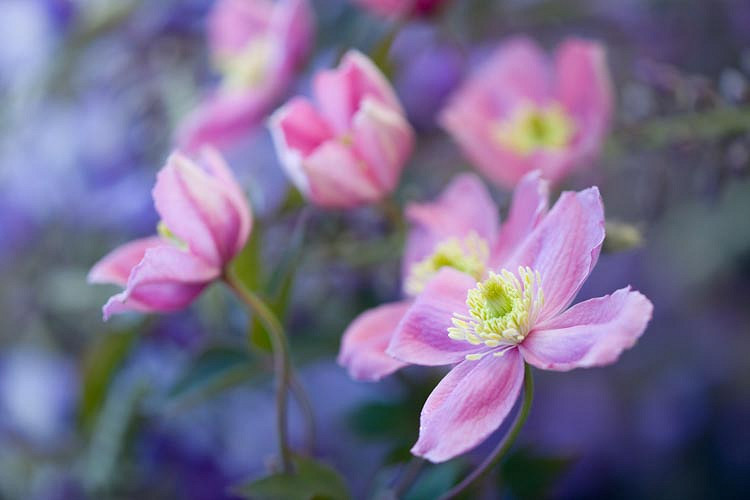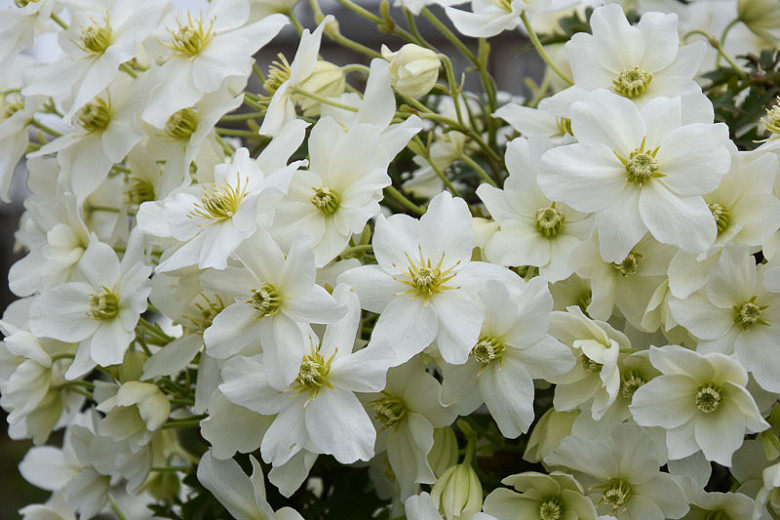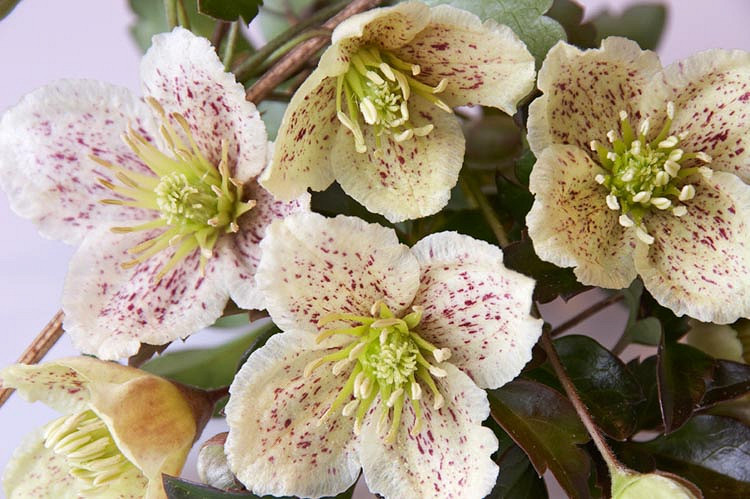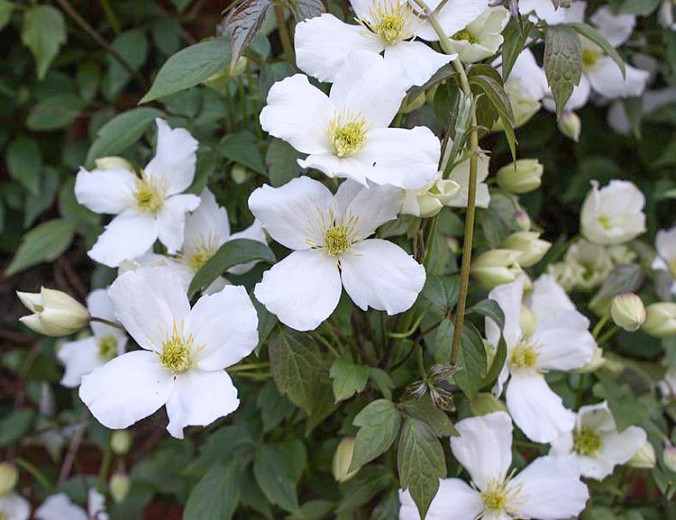Clematis Chevalier (Early Large-Flowered Clematis)
Free-flowering, Clematis Chevalier is a medium-sized, deciduous climber with large, deep velvety-purple, star-shaped flowers, 6 in. across (15 cm), adorned with contrasting bright yellow anthers. The blossoms mature to a pretty lavender blue as they age and may occasionally be semi-double, and even fully double.
Free-flowering, Clematis Chevalier is a medium-sized, deciduous climber with large, deep velvety-purple, star-shaped flowers, 6 in. across (15 cm), adorned with contrasting bright yellow anthers. The blossoms mature to a pretty lavender blue as they age and may occasionally be semi-double, and even fully double. Flowering in early summer and again in late summer and early fall, this showy large-flowered clematis is ideal for growing in patio containers or in small gardens.
- Easy to grow and to cultivate, this clematis thrives in moist, well-drained soils, in full sun to part shade. Keep the roots cool and shaded by other plants or add a layer of pebbles or flat stones at the base.
- Hardy, this clematis can quickly grow up to 4-6 ft. long (120-180 cm).
- Deadhead after the first wave of blooms to promote new blooms.
- This Clematis belongs to the second group or third group of Clematis.
- Second group of Clematis includes Clematis which flower in early summer on short shoots developing from the last year's growth. Some flower again in late summer on new growth. These Clematis vines should be pruned in late winter or early spring before new growth starts and after the first flush of flowers in early summer.
- Prune in late winter or early spring: Remove dead or weak stems before growth begins. Check individual stems from the top down until you reach a pair of healthy buds, and prune just above them, removing the spindly or damaged growth above. Avoid heavy pruning or flowers will be lost
- Then prune again after the first flush of flowers: To encourage a second flush of flowers later in the season prune back some stems by cutting to large buds or a strong side shoot immediately below the blooms. Top-heavy or overgrown plants can be gradually reduced over two to three seasons by pruning back harder after the first flush of flowers. They are unlikely to produce a second flush of flowers, but should flower again the following year, in late spring or early summer.
- Third group of Clematis includes Clematis which flower in late summer on growth made in that season. They should be pruned in late winter or early spring and require 'hard pruning': simply cut back the stems to a pair of strong buds about 1ft. (30 cm) above ground level before growth begins in early spring.
- Toxic to dogs, toxic to cats, toxic to horses.
Requirements
| Hardiness | 4 – 9 |
|---|---|
| Heat Zones | 1 – 9 |
| Climate Zones | 2A, 2B, 3A, 3B, 4, 5, 6, 7, 8, 9, 10, 11, 14, 15, 16, 17, 18, 19, 20, 21, 22, 23, 24, A2, A3 |
| Plant Type | Climbers |
| Plant Family | Clematis |
| Exposure | Full Sun, Partial Sun |
| Season of Interest | Summer (Early,Late)Fall |
| Height | 4' – 6' (120cm – 180cm) |
| Water Needs | Average |
| Maintenance | Low |
| Soil Type | Chalk, Clay, Loam, Sand |
| Soil pH | Alkaline, Neutral |
| Soil Drainage | Moist but Well-Drained |
| Characteristics | Showy |
| Tolerance | Deer |
| Attracts | Butterflies, Hummingbirds |
| Garden Uses | Beds and Borders, Patio and Containers, Small Gardens, Wall-Side Borders |
| Garden Styles | City and Courtyard, Informal and Cottage, Traditional Garden |

